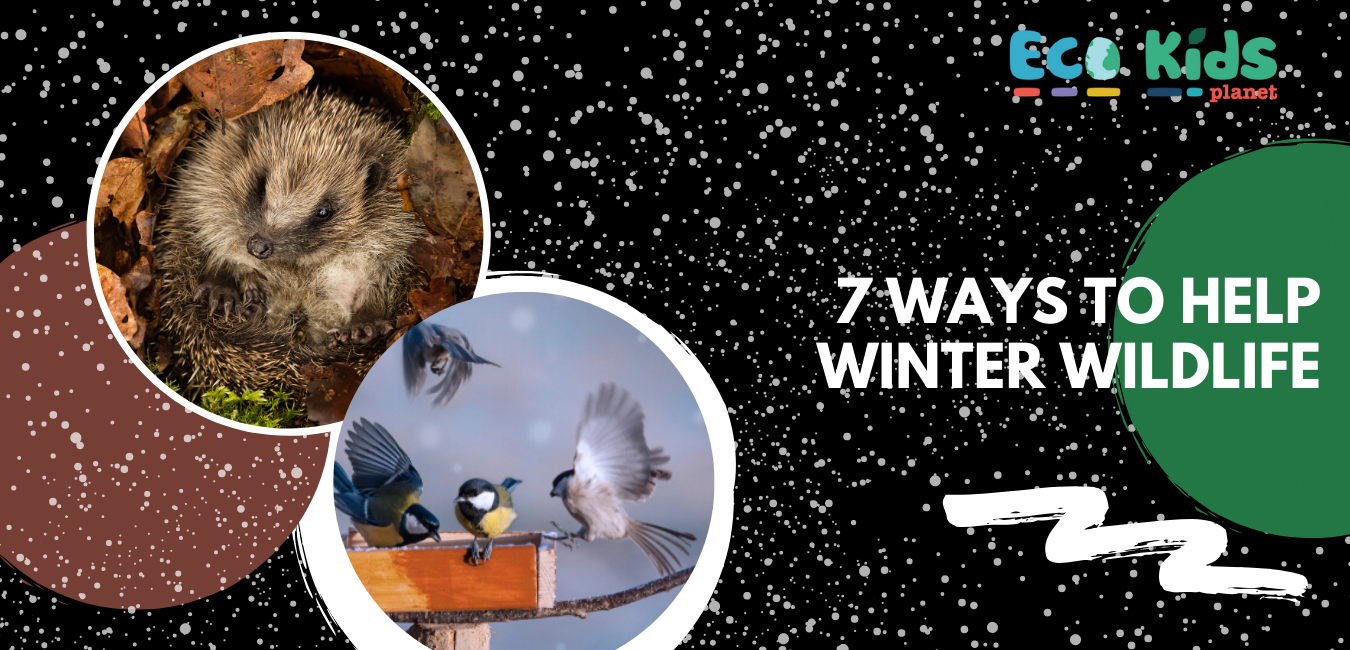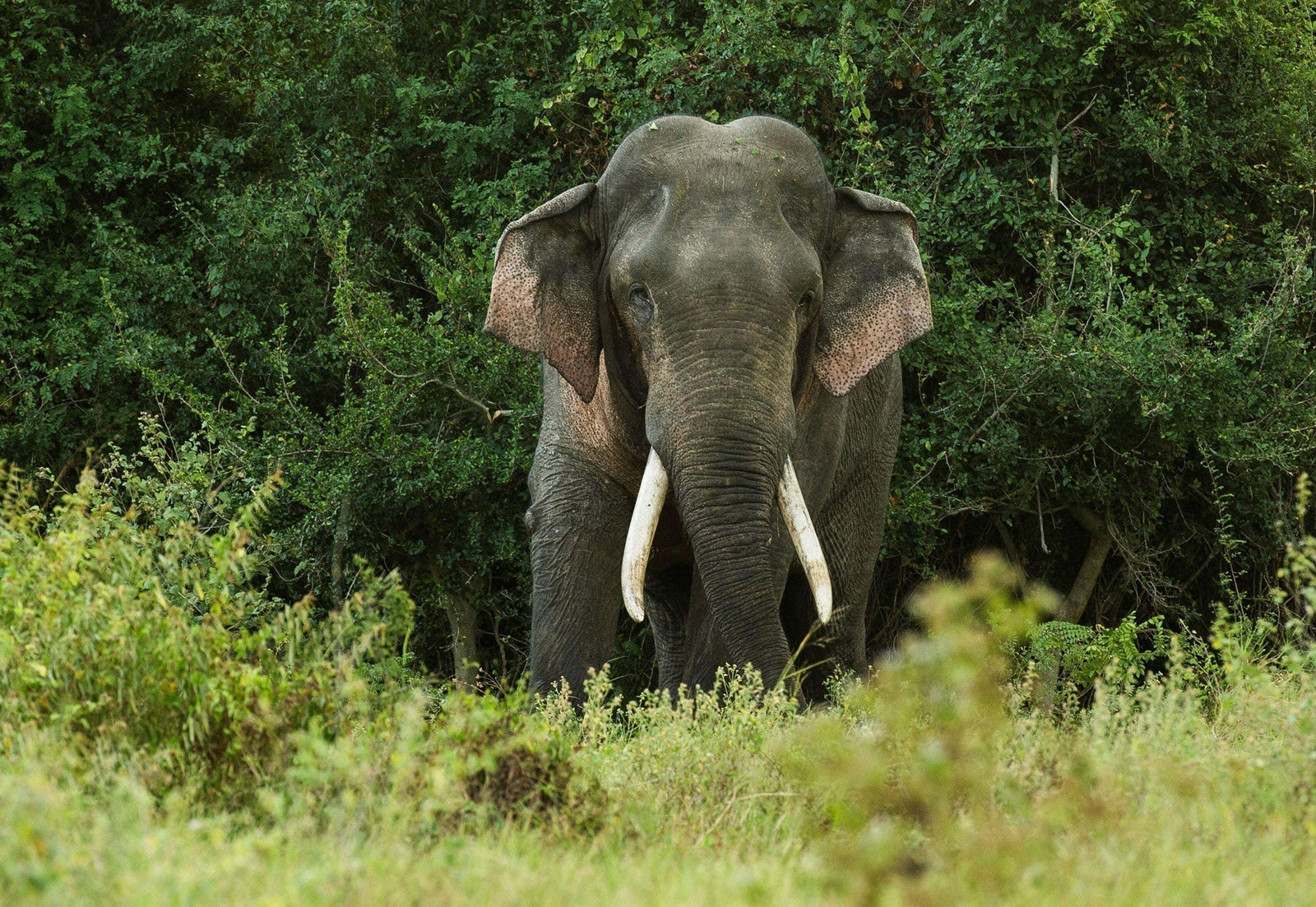Your Cart is Empty
Liven up your garden with wild visitors! Here’s how to attract wildlife into your garden and help it survive through the winter.
 When temperatures are freezing, a lot of water sources ice up. This makes it difficult for wildlife to have a drink. Toxic gases can also build up in a frozen pond, and these are very harmful to hibernating frogs. If your pond freezes, pop the kettle on and fill a saucepan with hot water. Place this on your pond until a hole has melted that’s big enough to allow wildlife to enter and exit. Never smash or break the ice, because this sends shockwaves into the water, which can harm wildlife.
When temperatures are freezing, a lot of water sources ice up. This makes it difficult for wildlife to have a drink. Toxic gases can also build up in a frozen pond, and these are very harmful to hibernating frogs. If your pond freezes, pop the kettle on and fill a saucepan with hot water. Place this on your pond until a hole has melted that’s big enough to allow wildlife to enter and exit. Never smash or break the ice, because this sends shockwaves into the water, which can harm wildlife.

Give your bird feeders and birdbaths a good clean out with a brush, hot water and eco-friendly disinfectant. Empty out any old nesting material from nesting boxes. This helps stop diseases from spreading, keeping birds healthy over winter.
 Collect fallen leaves and place them underneath hedges and shrubs, or pile them up in a quiet area of your garden. This can provide a safe home for hedgehogs, and attract important insects for hedgehogs, frogs and birds to munch on!
Collect fallen leaves and place them underneath hedges and shrubs, or pile them up in a quiet area of your garden. This can provide a safe home for hedgehogs, and attract important insects for hedgehogs, frogs and birds to munch on!
 If you want to build something more appealing to hedgehogs, give our recycled hoggy home a go. Hedgehogs usually hibernate from now through to March/April, so now is a great time to prepare them a cosy, safe home. Don’t forget to leave a hole or gap in your fence or gate to allow your hedgehog to get in and out!
If you want to build something more appealing to hedgehogs, give our recycled hoggy home a go. Hedgehogs usually hibernate from now through to March/April, so now is a great time to prepare them a cosy, safe home. Don’t forget to leave a hole or gap in your fence or gate to allow your hedgehog to get in and out!
 Don’t worry about cutting back or pulling up ivy plants. Garden mess and flowers are loved by many insects over winter, because they act as important sources of pollen. Ivy flowers over the colder months so is a vital food source for them.
Don’t worry about cutting back or pulling up ivy plants. Garden mess and flowers are loved by many insects over winter, because they act as important sources of pollen. Ivy flowers over the colder months so is a vital food source for them.
 Nuts, berries, seeds and grubs are getting harder for our feathered friends to find. Top up your feeders with sustainably-sourced bird seeds, dried mealworms or wax worms, or try making our pinecone bird feeders.
Nuts, berries, seeds and grubs are getting harder for our feathered friends to find. Top up your feeders with sustainably-sourced bird seeds, dried mealworms or wax worms, or try making our pinecone bird feeders.
 Hedgehogs, dormice and foxes will appreciate fresh water and food being put out. You could use dog or cat food (not fish-based), sunflower seeds and nuts. Please don’t give them milk and bread, though, because it can cause diarrhoea and dehydration. If you have any fruit-bearing trees in the garden, leave fallen apples and pears for woodpeckers, foxes and badgers. Badgers love unsalted peanuts, too!
Hedgehogs, dormice and foxes will appreciate fresh water and food being put out. You could use dog or cat food (not fish-based), sunflower seeds and nuts. Please don’t give them milk and bread, though, because it can cause diarrhoea and dehydration. If you have any fruit-bearing trees in the garden, leave fallen apples and pears for woodpeckers, foxes and badgers. Badgers love unsalted peanuts, too!
Comments will be approved before showing up.
Can Fake Tusks Help Save Real Animals? Synthetic ivory – a man-made material that looks and feels like real tusk – is sparking big conservation questions. Could it stop poaching and protect elephants, or might it make ivory seem more acceptable again? We've put together the facts below – and we're a...
Our Springtime Scavenger Hunt competition, featured in March's Secrets of the Sands issue, brought in a burst of colour, creativity and curiosity! From blossom hunts and frog-filled ponds to bees buzzing in crocuses and brilliant nature poems, your entries captured the magic of the season in so many wonderful ways. Thank you to everyone who took part – we were amazed by your discoveries and loved seeing spring through your eyes.
Our Animal Besties writing contest from the 'Nature's Best Buddies' issue brought in a flood of heartwarming, imaginative and often hilarious tales of unexpected friendships. From swans befriending capybaras to chickens bonding with foxes, your entries were full of surprise, kindness and creativity....



